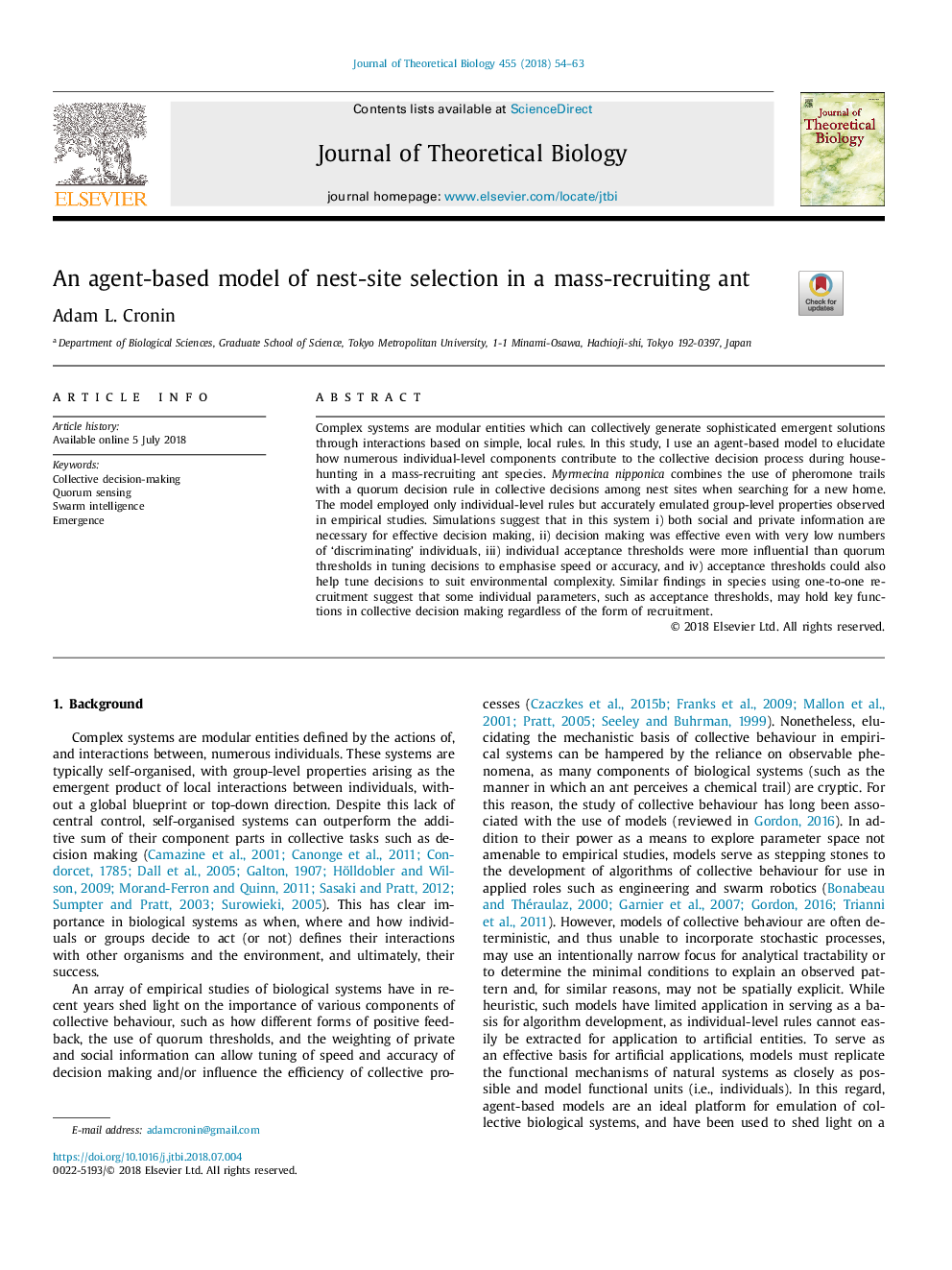| Article ID | Journal | Published Year | Pages | File Type |
|---|---|---|---|---|
| 8876475 | Journal of Theoretical Biology | 2018 | 10 Pages |
Abstract
Complex systems are modular entities which can collectively generate sophisticated emergent solutions through interactions based on simple, local rules. In this study, I use an agent-based model to elucidate how numerous individual-level components contribute to the collective decision process during house-hunting in a mass-recruiting ant species. Myrmecina nipponica combines the use of pheromone trails with a quorum decision rule in collective decisions among nest sites when searching for a new home. The model employed only individual-level rules but accurately emulated group-level properties observed in empirical studies. Simulations suggest that in this system i) both social and private information are necessary for effective decision making, ii) decision making was effective even with very low numbers of 'discriminating' individuals, iii) individual acceptance thresholds were more influential than quorum thresholds in tuning decisions to emphasise speed or accuracy, and iv) acceptance thresholds could also help tune decisions to suit environmental complexity. Similar findings in species using one-to-one recruitment suggest that some individual parameters, such as acceptance thresholds, may hold key functions in collective decision making regardless of the form of recruitment.
Related Topics
Life Sciences
Agricultural and Biological Sciences
Agricultural and Biological Sciences (General)
Authors
Adam L. Cronin,
